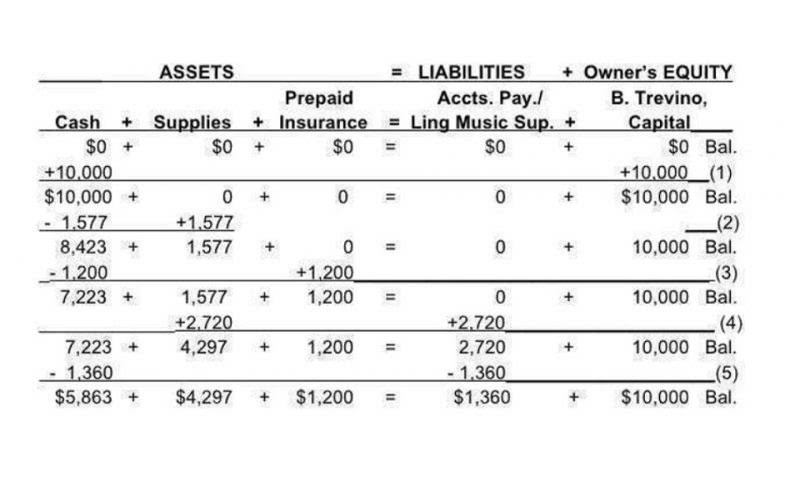
At Secureframe, we believe everyone should have an expert in their corner to answer those questions and support you at every step of the compliance journey. It’s why we assign every customer a former auditor to help with the entire process — from understanding and implementing control requirements all the way through the audit itself. They typically include a few introductory paragraphs that outline how the systems under audit are organized and how security controls are designed. The appropriateness of the methods, the consistency in application, the accuracy and completeness of data, and the reasonableness of significant assumptions used by the company in developing accounting estimates.

Rights and Obligations
Assertions assist auditors in considering a wide range of issues that are relevant to the authenticity of financial statements. The consideration of management assertions during the various stages of audit helps to reduce the audit risk. It means that management implicitly or explicitly claims that the value of assets, liabilities, income, expenses, and equity shown in financial statements are correctly measured and disclosed according to the applicable financial reporting framework. The implicit or explicit claims by the management on the preparation and appropriateness of financial statements and disclosures are known as management assertions.

Get expert guidance to prepare for your SOC 2 audit
Accuracy is concerned with the appropriate recording of transaction amounts, while cut-off assertions verify that transactions are recorded in the correct accounting period. Lastly, classification assertions relate to the proper categorization of transactions in the appropriate accounts. Auditors scrutinize these assertions by examining supporting documentation, reviewing transactional workflows, and performing analytical procedures to ensure that the transactions are presented fairly in the financial statements. Financial statement assertions are statements or claims that companies make about the fundamental accuracy of the information in their financial statements. These statements management assertions include the balance sheet, income statement, and cash flow statement.

Audit Procedures for Obtaining Audit Evidence
- We answer these questions below, then cut to the chase with a sample management assertion and customizable template.
- It requires auditors to challenge the assumptions and estimates made by management, especially in areas susceptible to significant judgment or where there is a higher risk of management bias.
- These cover all items (transactions, assets, liabilities and equity interests) and would include for example confirming that disclosures relating to non–current assets include cost, additions, disposals, depreciation, etc.
- Relevant test – select a sample of entries from the sales account in the general ledger and trace to the appropriate sales invoice and supporting goods dispatched notes and customer orders.
Any inventory held by a third party on behalf of the audit entity has been included in the inventory balance. All assets, liabilities and equity balances that were supposed to be recorded have been recognized in the financial statements. Audit Assertions are the implicit or explicit claims and representations made by the management responsible for the preparation of financial statements regarding the appropriateness of the various elements of financial statements and disclosures.

The credibility of management’s claims is also influenced by the entity’s internal control environment. A robust system of internal controls reduces the risk of misstatement, thereby enhancing the reliability of the assertions. Auditors assess the design and implementation of these controls, and their effectiveness over the reporting period, to determine the level of reliance that can be placed on the management’s statements. Management assertions are claims made by https://x.com/BooksTimeInc members of management regarding certain aspects of a business. The concept is primarily used concerning auditing a company’s financial statements, where the auditors rely upon various assertions regarding the business.
- Inventory is another area that auditors may review to determine that inventory is properly valued and recorded using the appropriate valuation methods.
- Assets, liabilities, and equity interests are included in the financial statements at appropriate amounts, and any resulting valuation or allocation adjustments are appropriately recorded.
- To test for occurrence the procedures will go the other way and start with the entry in the ledger and check back to the supporting documentation to ensure the transaction actually happened.
- Hence, the financial statements contain management’s assertions about the transactions, events and account balances and related disclosures that are required by the applicable accounting standards such as US GAAP or IFRS.
Financial audits are a critical component of corporate governance, providing stakeholders with assurance about the accuracy of a company’s financial statements. Central to this process are management assertions—claims made by an organization’s executives regarding the financial data they present. Accounting management assertions are implicit or explicit claims made by financial statement preparers. These assertions attest that the preparers abided by the necessary regulations and accounting standards when preparing the financial statements. Whether you’re with a Fortune 500 company, a nonprofit, https://www.bookstime.com/ or are a small business owner, any time you prepare financial statements, you are asserting their accuracy.


